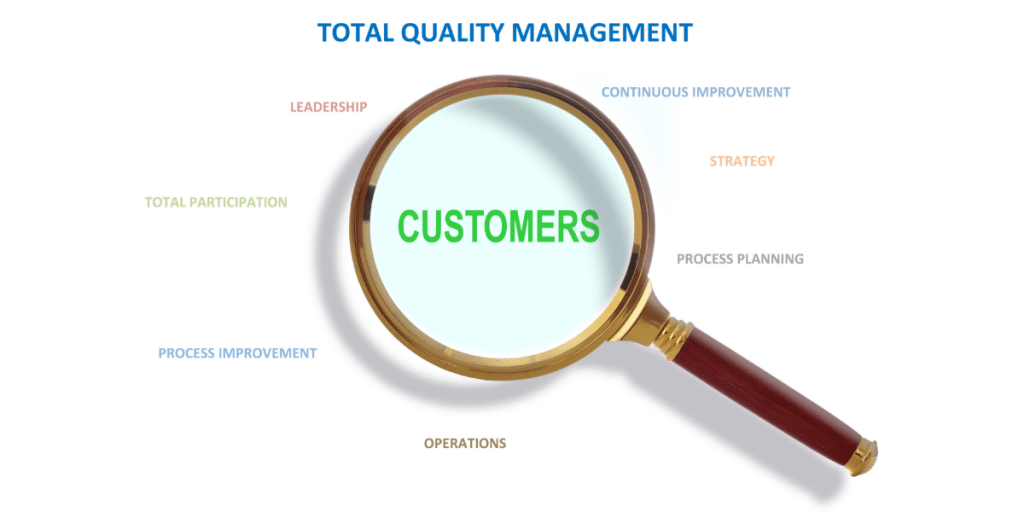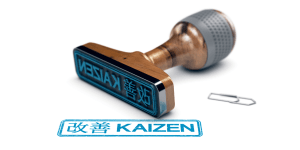Total Quality Management Methodology is a proven approach to improve business processes and enhance customer satisfaction. Defining Total Quality Methodology is the first step towards understanding its benefits. The principles of Total Quality focus on continuous improvement, customer satisfaction, and employee involvement. In this blog post, we will explore the benefits of Total Quality in team management and how it can help businesses drive operational excellence.
We will also provide readers with tools & tips to adopt Total Quality Management in their organizations. Additionally, we will discuss the pros and cons of this approach and provide examples of companies that successfully use Total Quality Management Methodology. Stay tuned to learn more about how Total Quality can help your business achieve success.
- Total Quality Methodology in Total Quality Management
- Definition and Principles of Total Quality Methodology
- Benefits of Total Quality in Team Management
- Tools & Tips for Implementing Total Quality Management
- Pros and Cons of Total Quality Management Methodology
- Examples of Companies That Use Total Quality Management Methodology
- The Importance of Employee Involvement in Total Quality Management
- Conclusion
Total Quality Methodology in Total Quality Management
Total Quality Methodology is a vital part of Total Quality Management. It is a systematic approach to quality improvement that integrates all aspects of an organization, from the design phase to delivery of the final product or service. The methodology involves a series of steps that aim to identify, measure, analyze, and improve an organization’s quality practices continuously.
Imagine Total Quality Methodology as a recipe for baking a cake. First, you must identify the ingredients, such as flour, sugar, eggs, and butter, which are the essential components of the cake. Similarly, Total Quality Methodology identifies the critical factors that need consideration, such as customer satisfaction, employee involvement, and process improvement. Next, you measure the ingredients’ precise quantities, ensuring that they are in the right proportion to achieve the desired result.
In Total Quality Methodology, you measure and analyze the organization’s performance metrics and determine the areas that need improvement. This step helps identify defects, errors, and waste in the processes and helps organizations understand the root cause of problems. Once you have measured and analyzed the ingredients, you mix them together, following a specific sequence to achieve the desired consistency. Similarly, Total Quality Methodology involves developing and implementing a plan to improve the processes’ quality. This step includes identifying the areas of improvement, setting targets, developing an action plan, and monitoring the results.
Finally, you bake the cake, and once it is ready, you must evaluate its quality. Is it soft and spongy? Does it taste good? Similarly, Total Quality Methodology involves evaluating the effectiveness of the improvement plan and determining its impact on the organization’s overall performance. In conclusion, Total Quality Methodology is a systematic approach to quality improvement that aims to identify, measure, analyze, and improve an organization’s quality practices continuously. By following this methodology, organizations can achieve their quality objectives, improve customer satisfaction, and enhance their bottom line.
Definition and Principles of Total Quality Methodology
Total Quality Methodology (TQM) is a management approach that seeks to optimize the performance of an organization through continuous improvement in all areas of operation. TQM emphasizes the importance of quality in all aspects of the organization, from product design to customer service. The principles of TQM are rooted in the philosophy that quality is everyone’s responsibility, and that continuous improvement is essential for long-term success.
One of the key principles of TQM is customer focus. This means that the organization must understand the needs and expectations of its customers and strive to meet or exceed them. Another principle is continuous improvement, which involves constantly seeking ways to improve processes, products, and services. TQM also emphasizes the importance of teamwork, as well as the involvement of all employees in the quality improvement process. To implement TQM effectively, organizations must adopt a process-oriented approach.
This involves identifying key processes and continually monitoring and improving them. TQM also involves the use of various tools and techniques, such as statistical process control, root cause analysis, and benchmarking. In summary, Total Quality Methodology is a comprehensive approach to managing an organization that emphasizes the importance of quality, continuous improvement, customer focus, teamwork, and a process-oriented approach. By implementing TQM principles, organizations can enhance their performance, increase customer satisfaction, and ultimately achieve long-term success.
Benefits of Total Quality in Team Management
Total Quality Management (TQM) is a methodology that focuses on continuous improvement and customer satisfaction. It is a holistic approach to management that involves every employee in an organization, including executives and frontline workers. TQM has many benefits when it comes to team management. Here are some of them:
1. Improved Communication and Collaboration TQM emphasizes the importance of communication and collaboration among team members. It encourages employees to share their ideas, suggestions, and concerns with their colleagues and superiors. This leads to better decision-making, problem-solving, and teamwork.
2. Increased Efficiency and Productivity TQM helps teams identify and eliminate waste, reduce errors, and streamline processes. This results in increased efficiency and productivity. When employees work together to improve processes, they can accomplish more in less time, with fewer resources.
3. Enhanced Customer Satisfaction TQM focuses on meeting and exceeding customer expectations. By involving all employees in the process of quality improvement, organizations can ensure that every customer interaction is positive and satisfying. Happy customers lead to repeat business and referrals, which are essential for long-term success.
4. Empowered Employees TQM gives employees a sense of ownership and responsibility for their work. It encourages them to take initiative, be creative, and continuously improve their skills. When employees feel empowered, they are more engaged and motivated, which leads to higher job satisfaction and retention.
In conclusion, Total Quality Management is an effective methodology for team management that offers many benefits, including improved communication and collaboration, increased efficiency and productivity, enhanced customer satisfaction, and empowered employees. By implementing TQM principles in your organization, you can create a culture of continuous improvement that leads to long-term success.
Tools & Tips for Implementing Total Quality Management
Implementing Total Quality Management (TQM) can be challenging for any organization. However, with the right tools and tips, the process can be made smoother and more effective. Here are some essential tools and tips to help you implement TQM successfully:
1. Identify key performance indicators (KPIs) The first step in implementing TQM is to identify your organization’s KPIs. This will help you understand where your organization stands in terms of quality and what areas need improvement. Some common KPIs include customer satisfaction, defect rates, and employee satisfaction. Once you have identified your KPIs, you can use them to track progress and measure the success of your TQM efforts.
2. Use process mapping Process mapping is a visual tool that helps identify inefficiencies and areas for improvement in a process. It involves breaking down a process into smaller steps and identifying where bottlenecks or inefficiencies occur. By using process mapping, you can make your processes more efficient and effective, leading to better overall quality.
3. Conduct regular quality audits Conducting regular quality audits is an essential part of TQM. Audits help identify issues before they become major problems and ensure that your organization is meeting quality standards. Make sure to conduct audits regularly and use the results to improve your processes and procedures.
4. Encourage employee involvement Employee involvement is crucial to the success of TQM. Encourage employees to participate in the process and provide feedback on how to improve quality. By involving employees, you can create a culture of quality and continuous improvement.
5. Provide training and support Finally, make sure to provide training and support to employees to help them understand TQM and how it relates to their job. Training can help employees understand the importance of quality and how they can contribute to the process. Support can come in the form of coaching, mentoring, or other resources.
In conclusion, implementing TQM requires effort, dedication, and the right tools and tips. By using KPIs, process mapping, quality audits, employee involvement, and training and support, you can successfully implement TQM and improve the overall quality of your organization.
Pros and Cons of Total Quality Management Methodology
Total Quality Management (TQM) is a business management methodology that aims to enhance the quality of products and services provided by a company. This methodology involves all employees in the organization to work together towards achieving quality excellence. TQM has its advantages and disadvantages, which are discussed below: Pros of TQM:
1. Increased customer satisfaction: TQM focuses on meeting customers’ needs and expectations. By implementing TQM, companies can ensure that their customers are satisfied with the products and services provided.
2. Improved quality: TQM helps to identify and eliminate defects in the production process. This leads to an overall improvement in the quality of products and services.
3. Increased efficiency: TQM helps to streamline processes and eliminate waste, resulting in increased efficiency and productivity.
4. Employee involvement: TQM requires the involvement of all employees in the organization. This creates a sense of ownership and accountability, which leads to increased motivation and job satisfaction.
5. Competitive advantage: By implementing TQM, companies can gain a competitive advantage by providing higher quality products and services than their competitors.
Cons of TQM:
1. Time-consuming: Implementing TQM requires a significant amount of time and resources. This can be a challenge for small businesses with limited resources.
2. Resistance to change: Implementing TQM requires changes in the organizational structure and culture. Employees may resist these changes, leading to implementation challenges.
3. Costly: Implementing TQM requires investments in training, technology, and process improvements. This can be costly for some companies.
4. Overemphasis on quality: TQM may lead to an overemphasis on quality at the expense of other important business goals, such as profitability.
In conclusion, TQM has its advantages and disadvantages. While it can help companies improve quality, increase efficiency, and gain a competitive advantage, it also requires significant investments of time and resources, and may face implementation challenges. Companies should carefully consider the pros and cons of TQM before deciding to implement this methodology.
Examples of Companies That Use Total Quality Management Methodology
Total Quality Management (TQM) is a methodology that aims to improve the quality of products and services by involving all employees in the organization. Many companies have implemented TQM to achieve better customer satisfaction and increase profitability. Below are some examples of companies that use TQM methodology:
1. Toyota: Toyota’s famous “Lean Production” is a TQM-based approach to manufacturing. It focuses on minimizing waste and maximizing efficiency in all aspects of production.
2. Ford: Ford has implemented TQM methodology to improve its customer satisfaction ratings. By involving all employees in the quality control process, Ford has been able to identify and correct issues quickly, resulting in a better overall customer experience.
3. Motorola: Motorola is known for its Six Sigma methodology, which is a TQM-based approach to quality control. By using data-driven decision making and involving all employees in the process, Motorola has been able to improve its product quality and reduce defects.
4. Amazon: Amazon has implemented TQM methodology in its warehouses to improve efficiency and reduce errors. By involving all employees in the quality control process, Amazon has been able to streamline its operations and improve its bottom line. In conclusion, the implementation of TQM methodology has proven to be beneficial for many organizations.
By involving all employees in the quality control process, companies have been able to improve product quality, reduce waste, and increase profitability.
The Importance of Employee Involvement in Total Quality Management
Total Quality Management (TQM) is a methodology used by many organizations to improve customer satisfaction and organizational efficiency. One of the key components of TQM is employee involvement, which refers to giving employees a voice in decision-making processes and encouraging them to take ownership of their work.
When employees are involved in the TQM process, they are more likely to be engaged and committed to the organization’s goals. This can lead to increased productivity, improved quality, and higher levels of customer satisfaction. In addition, involving employees in the TQM process can help to identify areas of improvement and promote innovation within the organization. Furthermore, employee involvement can help to create a culture of continuous improvement, where everyone is encouraged to contribute ideas and suggestions for improvement.
This can lead to a more collaborative and supportive work environment, which can improve morale and reduce turnover. In order to successfully implement employee involvement in TQM, organizations must provide training and support to employees, as well as establish clear communication channels and feedback mechanisms. It is also important to recognize and reward employees who contribute to the TQM process, as this can help to maintain momentum and motivate others to get involved.
In conclusion, employee involvement is a critical component of TQM and can have a significant impact on organizational performance. By empowering employees to take ownership of their work and participate in decision-making processes, organizations can improve quality, increase productivity, and enhance customer satisfaction.
Conclusion
Total Quality Management Methodology is a comprehensive approach to quality management that can help businesses improve their products, services, and operations. It involves a set of principles and practices that focus on continuous improvement, customer satisfaction, and teamwork. By implementing TQM, organizations can achieve a range of benefits, such as improved customer loyalty, increased productivity, and reduced costs.
However, it’s worth noting that TQM isn’t a quick fix, and it requires a long-term commitment from management and employees. Overall, TQM can be a powerful tool for organizations that want to improve their quality and competitiveness, and there are many examples of companies that have successfully implemented TQM, such as Toyota, Ford, and Motorola. With the right tools, tips, and mindset, any business can start on the path to Total Quality Management.












